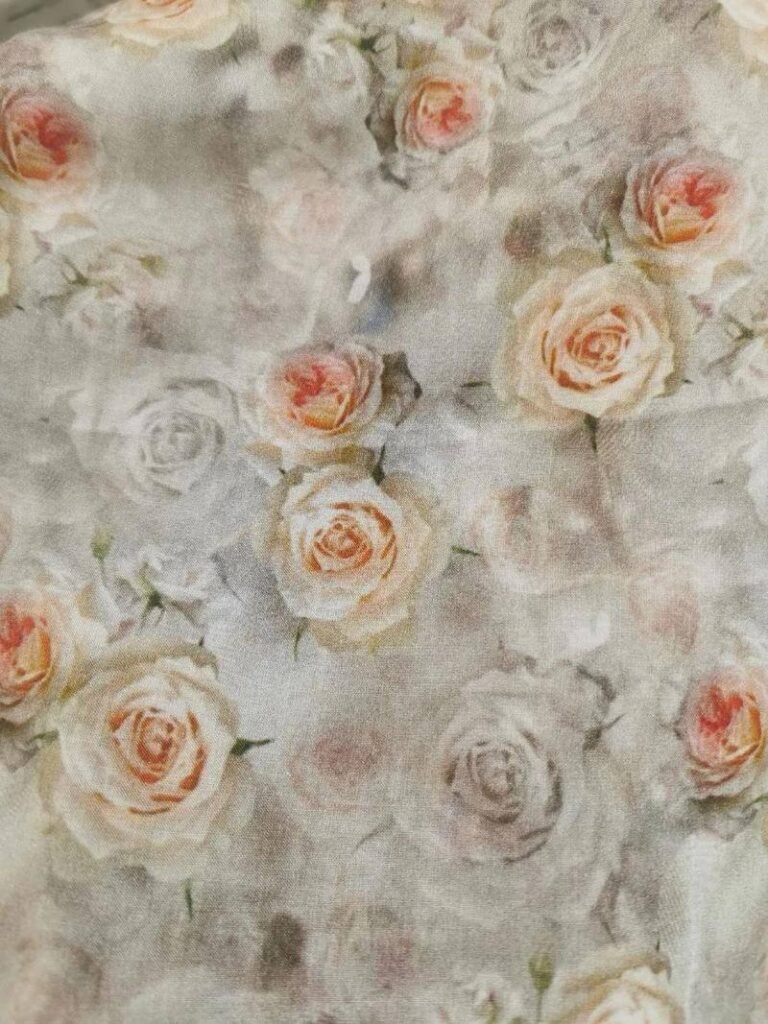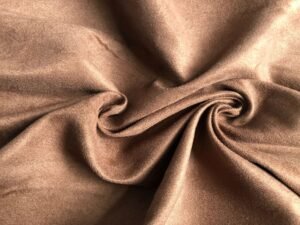Origins of Modal Fabrics
Modal fabric was first developed in the 1950s by the Austrian company Lenzing AG. It is made from beechwood trees, which are abundant and grow quickly, making them a more sustainable source of raw material compared to other fibers like cotton. The process of creating modal involves extracting cellulose from the wood pulp, which is then chemically processed and spun into fiber.
Unlike its close relatives, viscose and rayon, modal is considered a more advanced form of these fibers. It undergoes a more refined production process, which results in a fabric that is stronger, more durable, and resistant to shrinkage. Over the years, advancements in production methods have made modal more eco-friendly, with brands focusing on reducing the chemical usage and energy consumption in its manufacturing.
What Are Modal Fabrics?
Modal is a type of semi-synthetic fabric derived from natural cellulose, typically sourced from beechwood trees. The process of turning beechwood into fabric begins with extracting the cellulose from the wood pulp, which is then dissolved and spun into fine fibers. These fibers are woven or knitted to create the smooth, soft texture modal is known for.
What sets modal apart from other cellulose-based fabrics like rayon is its enhanced durability and superior softness. It has a silky, luxurious feel against the skin, which makes it ideal for clothing that’s worn close to the body, such as loungewear, sleepwear, and undergarments. In addition to its tactile appeal, modal also offers excellent breathability and moisture-wicking properties, making it a popular choice for activewear and warm-weather clothing.
Characteristics of Modal Fabrics
Modal fabrics are known for their outstanding qualities, making them a popular choice for both casual and luxury apparel. Here are some key characteristics:
- Softness: Modal is exceptionally smooth and soft to the touch, offering a luxurious feel similar to silk or cotton. This makes it ideal for items like loungewear, sleepwear, and intimate apparel.
- Breathability: Modal is highly breathable, which helps keep the body cool by allowing air to circulate easily. This makes it an excellent choice for warmer climates or activewear.
- Moisture-Wicking: Thanks to its natural cellulose structure, modal efficiently absorbs moisture from the skin, keeping you dry and comfortable, even in warmer conditions.
- Durability: Modal is stronger than many other cellulose-based fabrics. It resists pilling and retains its shape and softness even after repeated washing. It’s also less prone to shrinkage compared to traditional rayon.
- Color Retention: Modal holds dyes exceptionally well, resulting in vibrant colors that remain rich and intense, even after multiple washes.
These qualities make modal fabrics not only comfortable to wear but also long-lasting, making them a versatile fabric for a variety of uses.
Types of Modal Fabrics
Modal fabrics are available in different types and blends, offering versatility for various uses. Here’s an overview of the most common variations:

Standard Modal: The classic form of modal, known for its softness and breathability. It’s commonly used for everyday clothing like T-shirts, loungewear, and undergarments due to its smooth texture and comfort.
Blended Modal: Modal is often combined with other fibers to enhance its qualities. Popular blends include:

Modal and Cotton: This blend combines the softness of modal with the breathability and durability of cotton, making it ideal for casual wear like shirts, dresses, and sleepwear.
Modal and Spandex: Adding spandex gives modal more stretch and flexibility, perfect for activewear, leggings, and form-fitting garments.


Modal and Polyester: This blend increases durability and resistance to wrinkles, making it suitable for travel clothing and garments that require easy maintenance.

Satin Modal: This version of modal has a smooth, lustrous finish similar to satin. It’s often used for high-end fashion items, evening wear, and luxurious sleepwear, offering an elegant sheen.

Printed Modal: Modal can be printed with vibrant designs, offering a stylish option for fashion-forward clothing like dresses, tops, and accessories.
These variations of modal make it a highly versatile fabric, suitable for everything from casual wear to high-fashion pieces.
Production Process of Modal Fabrics
The production of modal fabric involves a detailed and environmentally-conscious process, turning beechwood into a smooth, durable, and luxurious material. Here’s an overview of how modal is made:
| Step | Description |
|---|---|
| Harvesting the Wood | Beechwood trees are sustainably harvested as a renewable resource, with minimal environmental impact. |
| Cellulose Extraction | The wood is chipped and treated with a chemical solution to extract the cellulose, which forms the base of modal fabric. |
| Chemical Processing | The extracted cellulose is dissolved in a chemical solution to form a viscous liquid, using less toxic chemicals than traditional rayon. |
| Spinning the Fiber | The cellulose solution is forced through spinnerets to create fibers, which are then spun into threads. |
| Finishing | The fabric undergoes treatments like bleaching, dyeing, or adding a smooth finish, such as in satin modal for its glossy texture. |
| Eco-friendly Innovations | Modern modal production uses sustainable practices, like recycling water and chemicals, to reduce environmental impact. |
Note: Many modal manufacturers now prioritize eco-friendly production methods, utilizing closed-loop systems to recycle solvents and water, which makes the process more sustainable than traditional fabric manufacturing.
Advantages of Modal Fabrics
- Comfort: Soft and smooth, modal feels luxurious on the skin, making it ideal for loungewear and sleepwear.
- Breathability: Highly breathable, modal helps regulate body temperature, perfect for warm weather and activewear.
- Moisture-Wicking: It absorbs moisture quickly, keeping the body dry and comfortable.
- Durability: Modal is strong, resistant to shrinkage, and maintains softness after washing.
- Eco-Friendly: Made from renewable beechwood, modal is more sustainable and produced using less harmful chemicals.
Uses of Modal Fabrics
Modal is a versatile fabric used in various applications:
- Clothing: Modal is commonly found in casual wear, such as T-shirts, dresses, and sleepwear, thanks to its softness and comfort. It’s also popular in activewear, leggings, and loungewear.
- Home Textiles: Modal is used in bed linens, towels, and bathrobes due to its smooth feel and moisture-wicking properties.
- Underwear: The fabric’s breathable, soft nature makes it an ideal choice for underwear and intimates, where comfort is key.
Care of Modal Fabrics
Modal is easy to care for and retains its qualities over time with proper maintenance:
- Washing: Modal can be machine washed in cold or warm water, using a gentle cycle. Avoid hot water, which can cause the fabric to shrink.
- Drying: Air-drying is recommended to preserve the fabric’s softness and prevent shrinkage. If using a dryer, use a low heat setting.
- Ironing: Modal is relatively wrinkle-resistant, but if necessary, iron on a low to medium setting to smooth out creases.
- Avoiding Harsh Chemicals: To maintain the fabric’s durability and color, avoid using harsh detergents or bleach.
With proper care, modal fabrics can remain soft, vibrant, and comfortable for years.
Future Trends in Modal Fabrics
As sustainability continues to shape the textile industry, modal fabrics are expected to see further innovations:
- Eco-Friendly Production: Advances in closed-loop production methods will make modal even more sustainable, reducing water, energy, and chemical usage.
- Blends with Natural Fibers: Modal is increasingly being combined with other eco-friendly fibers like organic cotton, hemp, and bamboo to create even more sustainable fabric options.
- Performance Enhancements: Modal’s moisture-wicking and stretch properties are likely to be enhanced for use in activewear and sports apparel, offering greater performance benefits.
With these trends, modal is set to remain a go-to fabric for consumers seeking both comfort and sustainability.
Conclusion
Modal fabrics offer a perfect blend of comfort, durability, and sustainability, making them an excellent choice for both everyday wear and specialized garments. With its eco-friendly production process, luxurious feel, and versatile uses, modal continues to be a fabric of choice for the modern consumer. As technology and sustainable practices evolve, modal’s role in the fashion industry will likely expand, offering even more environmentally conscious options for the future.






